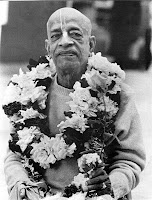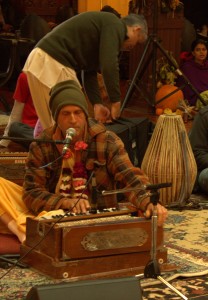From Ravikant Jagtap P
Why Christianity and islam allow meat eating? Some of my friends tell me that it is written in Quran that one is not muslim who don’t eat meat in 40days and cow is created by Allah for eating. Is it true? Why they don’t believe in reincarnation is there clear reference in bible and quran for this?
Answer Podcast
Islam - Quotes on Vegetarianism
Respect for animals:
Seest thou not that it is Allah Whose praise all beings in the heavens and on earth do celebrate, and the birds (of the air) with wings outspread? Each one knows its own (mode of) prayer and praise, and Allah knows well all that they do.
Sura 24:41
"The Holy Prophet Muhammad (S) was asked by his companions if kindness to animals was rewarded in the life hereafter. He replied: 'Yes, there is a meritorious reward for kindness to every living creature'." (Bukhari)
STATUS OF ANIMALS
"There is not an animal on earth, nor a bird that flies on its wings - but they are communities like you." (The Quran, 6:38)
PHYSICAL INJURY
"The Holy Prophet (S) forbade the beating or the branding of animals. Once he saw a donkey branded on its face and said: 'may Allah condemn the one who branded it'." (Muslim)
ANIMAL BAITING AND BLOOD SPORTS
"The Holy Prophet (S) forbade the setting up of animals to fight against each other." (Abu Dawud and Tirmidhi)
"The Holy Prophet (S) condemned those who pinion or restrain animals in any other way for the purpose of target shooting. (Al-Masburah and Al-Mujaththamah)." (Muslim)
CAGING
"The Holy Prophet (S) said: 'It is a great sin for man to imprison those animals which are in his power'." (Muslim)
VIVISECTION
According to tradition (Hadith Mishkat 3:1392), Mohammed taught that "all creatures are like a family of God; and He loves the most those who are the most beneficent to His family."
Compulsory to eat meat?
‘I find not in the Message received by me by inspiration any meat forbidden to be eaten by one who wishes to eat it…” Sura 6:145
"You are prohibited to eat flesh, blood & other things of a dead animal that is cut without reciting the names of Allah or is killed after severe beating or it is brutally slaughtered or somebody else has executed it , or it is dead due to a fall ,or some wild beast has eaten some of its chunk , or it is cut on a rock , or it is given as a sacrifice , or is killed by a sharp arrow. The Koran declares meat of such animal to be prohibited.(5.3)
As far as sacrificing the animal is concerned, the process of sacrifice should be complete within three strokes of a knife. It is mandatory to recite the kalma once while striking every time. It is essential to move the knife around its neck three times without hitting any bones. The food the animal had before the sacrifice should not come out & there shouldn't be any noise before cutting the animal. If any of the above isn’t followed, the meat and the sacrifice becomes unlawful (haram).
 Lakshman Poddar: At 10 PM, an abhishekh was performed for Sri Sri Krishna Balaram & Radha Shyam sundar with a blissful kirtan by 24 hour kirtan team.
And finally after fasting till noon, we had a sumptuous feast Prasad for everyone. Almost 1,000 devotees honored the Lord’s feast. Read more ›
Lakshman Poddar: At 10 PM, an abhishekh was performed for Sri Sri Krishna Balaram & Radha Shyam sundar with a blissful kirtan by 24 hour kirtan team.
And finally after fasting till noon, we had a sumptuous feast Prasad for everyone. Almost 1,000 devotees honored the Lord’s feast. Read more ›  Lakshman Poddar: At 10 PM, an abhishekh was performed for Sri Sri Krishna Balaram & Radha Shyam sundar with a blissful kirtan by 24 hour kirtan team.
And finally after fasting till noon, we had a sumptuous feast Prasad for everyone. Almost 1,000 devotees honored the Lord’s feast. Read more ›
Lakshman Poddar: At 10 PM, an abhishekh was performed for Sri Sri Krishna Balaram & Radha Shyam sundar with a blissful kirtan by 24 hour kirtan team.
And finally after fasting till noon, we had a sumptuous feast Prasad for everyone. Almost 1,000 devotees honored the Lord’s feast. Read more ›  Basu Ghosh Das: Just now I was informed that we had more than 2.5 lakhs - 2,50,000 or 250,000 (two hundred and fifty thousand) visitors here yesterday for Sri Krishna Janmastami! Of course, this is a "guestimate"... but there was a huge flow of visitors all day and a "mob" at midnight, including the Baroda Police Commissioner, Sri Satish Sharma, IPS, who was present with his family for the post abhishek arati at 1 AM.
Basu Ghosh Das: Just now I was informed that we had more than 2.5 lakhs - 2,50,000 or 250,000 (two hundred and fifty thousand) visitors here yesterday for Sri Krishna Janmastami! Of course, this is a "guestimate"... but there was a huge flow of visitors all day and a "mob" at midnight, including the Baroda Police Commissioner, Sri Satish Sharma, IPS, who was present with his family for the post abhishek arati at 1 AM.  "All That Lies Between" is a short new book by Kalakantha das containing his selected poems in appreciation of Srila Prabhupada written over the past thirty years. The book also contains essays addressing our relationship with Srila Prabhupada as well as the general topic of writing for Krishna. It is adorned with nine original portraits of His Divine Grace by Kuladri Prabhu and a foreword by H.H. Giriraja Swami
"All That Lies Between" is a short new book by Kalakantha das containing his selected poems in appreciation of Srila Prabhupada written over the past thirty years. The book also contains essays addressing our relationship with Srila Prabhupada as well as the general topic of writing for Krishna. It is adorned with nine original portraits of His Divine Grace by Kuladri Prabhu and a foreword by H.H. Giriraja Swami 




 Download Srila Prabhupada Vyasa Puja Offerings 2013 as a PDF of ePub file
Download Srila Prabhupada Vyasa Puja Offerings 2013 as a PDF of ePub file  Srila Prabhupada: I was very naughty when I was a boy. I would break anything. When I was angry, I would break the glass hookah pipes, which my father kept to offer to guests. Once my mother was trying to bathe me, and I refused and knocked my head on the ground, and blood came out. They came running and said, “What are you doing? You shall kill the child.”
Srila Prabhupada: I was very naughty when I was a boy. I would break anything. When I was angry, I would break the glass hookah pipes, which my father kept to offer to guests. Once my mother was trying to bathe me, and I refused and knocked my head on the ground, and blood came out. They came running and said, “What are you doing? You shall kill the child.”  168 paintings: Srila Prabhupada's life in cartoons
168 paintings: Srila Prabhupada's life in cartoons 
 Janmastami media from facebook
Janmastami media from facebook  The large American Elm tree near the curved row of benches close to the center of the park was the site of the birth of the Hare Krishna movement in the United States in 1966
The large American Elm tree near the curved row of benches close to the center of the park was the site of the birth of the Hare Krishna movement in the United States in 1966